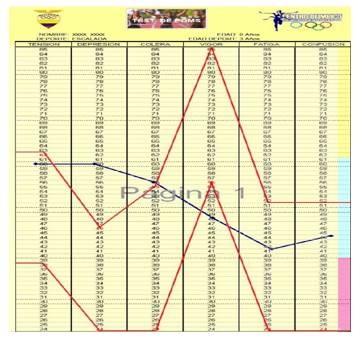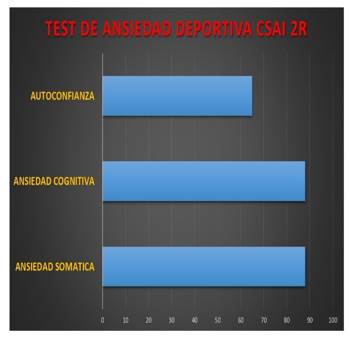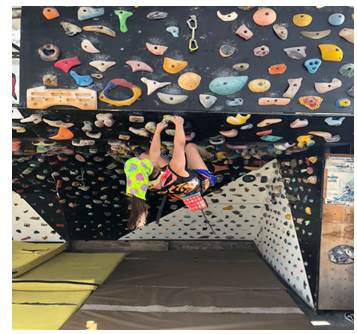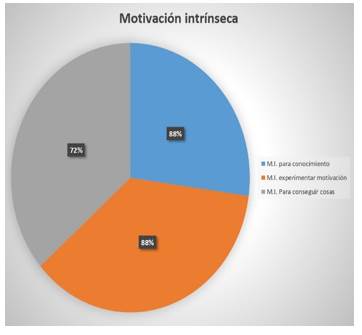Mi SciELO
Servicios Personalizados
Articulo
Indicadores
-
 Citado por SciELO
Citado por SciELO
Links relacionados
-
 Similares en
SciELO
Similares en
SciELO
Compartir
Ciencia y Deporte
versión On-line ISSN 2223-1773
Ciencia y Deporte vol.8 no.2 Camagüey mayo.-ago. 2023 Epub 01-Ago-2023
http://dx.doi.org/10.34982/2223.1773.2023.v8.no2.001
Original article
Cognitive Restructuring and Psycho-Educative Techniques for Athlete Emotional Control
1Universidad Nacional de San Luis (UNSL). Argentina.
2Universidad Técnica de Ambato (UTA). Ecuador.
3Unidad Educativa 12 de Noviembre-Tungurahua. Ecuador.
4Unidad Educativa Sagrada Familia Tungurahua. Ecuador.
Introduction:
The planning of competition-based sports and high performance requires the development of the athlete’s mental capacities to have a determining significance in the results. Among the techniques used, cognitive restructuring stands out.
Aim:
The purpose of this paper was to demonstrate the benefits of cognitive restructuring and learning psycho-educative techniques for athlete emotional control.
Methodology:
This research relied on an experimental case study involving an underage athlete. All the ethical parameters demanded for this study were fulfilled. The subject was a 13-year-old female climbing athlete. The psychological tests used were POMS, Pelletier motivation, and CSAI-2R. The psycho-educative interventions were performed twice a week (50 min), during a two-month planned microcycle.
Results:
The Profile of Mood States (POMS) resulted in a low score regarding the core item, which led to personal exploration and, simultaneously, ended with a psychological and sports assessment through the CSAI-2R pre-competitive anxiety test, which identified 65% cognitive anxiety, and 88% somatic anxiety.
Conclusions:
The differential results from the POMS and CSAI-2R tests indicated low psychological scores. This intervention process was an emotional containment tool in this particular case study.
Key words: Learning; psychology; sports.
INTRODUCTION
According to Carrasco-Coca (2021), sports are a valuable psycho-educative resource that helps develop psycho-motricity along with a series of values, capacities, and emotional and cognitive dexterities that promote and enable socializing processes. It favors the establishment of a determining role in the creation of the personality of children, and adolescents, and in the physiological health of adults.
Susan Harter's study, based on the application of the self-perception profile, details the way stress is handled. Additionally, the emotional quotient (EQ-i), version III (1997), assesses psychological well-being. The results indicated a greater score in the athletes' overall self-concept over adolescents who do not take sports, though they observed significant differences in the sub-dimensional values of assessing scales. In that sense, the author refers to the reliability of CSAI-2R, saying that these tests deal with self-concept assessment and its sub-dimensions of stress and tolerance to impulses. They also complement competitive sports activities and favor the development of a human identity provided they do not create adverse effects such as stress, anxiety, and a pathological fear of defeat.
Moreover, authors like Peña-Lerma & Rivas-Almaguer (2022) have noted that frequent physical sports practice increases creative and tactical skills, depending on the psycho-educative stimuli of daily training planning. From a different perspective, certain psychological elements like attention, focus, mental strength, and endurance to pain and exhaustion may be stimulated, if the proper psychological and pedagogical resources are used.
The emotional demands withstood by competition athletes need special follow-up that includes an initial psychological-sports diagnostic, based on the first element, to conduct mental training or psycho-educative processes programs (Tarqui-Silva, 2021). Haiying-Ji (2022) found that the heavy psychological burden and stress undergone by competition athletes constitute emotional factors often responsible for changes in sports performance or outcomes, as they affect neuro-cognitive capacities.
Reché et al. (2018) explored the link between resilience and optimism in sports and concluded that the more internal psychoemotional resources an athlete has, the better their performance in a tournament or event. Olmedilla et al. (2021) found marked differences associated with psychological factors between men and women, and their links to sports performance. They concluded that athletes competing in a sports discipline should manage self-regulation and self-motivation mechanisms as basic tools to accomplish success.
One frequent element found in the related literature is decision-making, seen as the way in which a competitor has the capacity to choose in a critical moment, thus showing the level of emotional maturity and cognitive development. The training significance and necessity of physical, technical, and tactical factors are assessed in the same way as an athlete's psychological and emotional components, as described by Castro-Sánchez et al. (2018).
The education of physical activities, such as heavy motricity, thin motricity, coordination, balance, and the identification of spatial, perceptual, and visual settings, constitute vision-spatial and sense-perceptual capacities that must be tuned for competition by implementing mental techniques that may be initiated in late childhood. In other words, approximately at 11-12 years of age, when individuals show an understanding of behavior and the surrounding, with greater language development and higher abstraction capacities. At this stage, the levels of intensity and demands from the sports activity increase, as a change from the previous ludic and formative stage in children (Cabrera-Valdés & Dupeyrón-García, 2019).
Molina-López et al. (2018) corroborated the hypothesis that a proper support system of social connection during adolescence will permit full growth and hence, further positive psycho-affective states and better emotional adaptability. Furthermore, the clinical psychological aspects are also present in activities that enhance health through sports. Within the area of competitions, cases like burnout, depression, nostalgia, and injuries, which occasionally lead to emotional issues, family arguments, and other conditions that could be prevented with the assistance of clinical-psychological sports specialists, and through psycho-educative processes in different topics (Tarqui-Silva, 2021).
Among the psycho-educative intervention processes in children and adolescents who take sports, including competition, Aparicio (2021) suggested the inclusion of self-dialogue techniques; setting group, team, or individual goals or targets; the implementation of strategies of visualization; respiratory and emotional control; and in some sports, weekly yoga sessions may be taken. All these techniques could be part of the skill-acquisition programs to cope with the demands of certain sports disciplines.
The diagnosis of anxiety from a competitive state is thought of as an emotional stage characterized by strong feelings of tension, nervousness, and apprehension linked to overexcitement of the nervous system. This psychological and emotional phenomenon is influenced by determiners like the fear of failing, social evaluation, physical harm, criticism, and social criticism. It can occur shortly before an athlete's participation in a competition (Trujillo-Torrealva & Reyes-Bossio, 2019).
Today, there is a broad range of intervention or mental training mechanisms for athletes, starting from the most basic psycho-pedagogic aspects, the utilization of mindfulness, psychological lab research, to neuro-cognitive explorations. However, López-Secanell & Gené-Morales (2021) noted the existence of more traditional models of psychological approach in sports, with very positive effects, such as the identification of cognitive distortions and the restructuring of thinking.
One example of the effectiveness of psycho-educative intervention and the training of mental skills in athletes is the findings of Guerrero-Rodríguez et al. (2018), who conducted an intervention study of emotional regulation on a junior soccer team. Assessment using instruments like POMS, CSAI-2R, and CERQ showed a decline in the emotional stress (POMS), and a reduction in the negative states (CSAI-2R and CERQ), which was corroborated by morph-physiological records of the heart rate, skin conductivity, and respiratory frequency records.
Among the positive effects of proper psycho-emotional intervention in athletes under psycho-physiological studies, is a research paper done by Hernández-Mite et al. (2018), who demonstrated the occurrence of a series of behavioral changes, with psycho-affective, adaptative, and maturative responses following the execution of a dexterity and mental skills sports program. Palicio-Mayoral (2022) stressed the marked development of sports psychology research, particularly in terms of competitive-based intervention programs, which are increasingly used by sports clubs, teams, and the selection of different disciplines and nations.
Accordingly, this research constitutes an experimental case study whose aim is to demonstrate the benefits of cognitive restructuring and learning psycho-educative techniques for athlete emotional control.
MATERIALS AND METHODS
This case study complied with the ethical parameters required for this research. Being the athlete a minor, her parents and coach were asked to sign a written consent statement. The following tests were performed as psychological positives: POMS, Pelletier motivation scale, and CSAI-2R. The psycho-educative interventions were performed twice a week (50 min), during a two-month planned micro-cycle.
The psycho-educative intervention was based on cognitive psychology parameters, first identifying the main automatic thoughts of the athlete by filtering the five most frequent thoughts and then implementing a teaching-learning process on activation strategies, respiration control, self-esteem, and visualization. The selection model of the main cognitive distortions measured was negativism, catastrophic thinking, selective abstraction, dichotomous generalization, and thinking. The inventory of automatic thoughts suggested by Ruiz and Lojan was used as a guide, though it was not included in the set of reactive instruments used due to previous use as a reference.
The study relied on the following databases: Sácielo Eso, Ralis, Word Wide, Science.org, Redil, and Sopas. The keywords used were learning, psychology, sports.
RESULTS AND DISCUSSION
The results of the Profile of Mood States (POMS) test performed in the initial diagnostic phase demonstrated a low score in vigor (Figure 1), indicating certain motivational-personal issues around the athlete's environment. Accordingly, the Pre-competitive Anxiety Test (CSAI-2R) was performed to evaluate self-confidence (65 %), cognitive anxiety (88 %), and somatic anxiety (88%) (Figure 2). This test demonstrated that the values in terms of self-confidence were unsuitable for a competitive athlete at this age. This outcome is similar to the findings of Andrade et al., (2019), who noted some determining elements in sports, such as attention, focus, mental strength, emotional control under pressure, endurance to pain and exhaustion, burnout, and anxiety. The tests evaluated several elements dealt with in this study since the evaluation of the athlete included the main psychological elements of competitive sports. Particularly, POMS and CSAI-2R evaluate indicators like emotional issues, cognitive anxiety, somatic anxiety, and cognitive distortions, which are closely related to the findings of Tarqui-Silva, (2021) in the micro-cycle of competition athletes, in which he ran the POMS as part of the psychological sports evaluation (Figure 1 y Figure 2).
Upon finishing the sports psychological evaluation, the main five athlete's cognitive distortions were identified (negativism, catastrophic thinking, selective abstraction, over-generalization, and dichotomous thinking), from a list of ten choices. Then, a psycho-educative process was conducted seeking emotional regulation. Concerning the mental intervention, certain strategies were implemented for breathing control, emotions, and self-esteem, along with techniques for visualization management. Among the factors evaluated was the study conducted by Haiying-Ji (2022), who emphasized the psychological evaluation and training of competition athletes, stress, and psychological pressure as the negative factors affecting sports performance.
In the psycho-educative process for emotional control, the athletes showed growing motivation in the training sessions. The visualization strategies went from simple to more complex, beginning the training in the "cave" (Figure 3), then performing more complex exercises, such as climbing walls. At the end of the process, the Pelletier motivation test was performed to check the motivation over knowledge (88%). Meanwhile, the motivation to achieve things (72 %) (Figure 4) demonstrated that the overall motivation values were acceptable, and tended to increase. In this sense, López-Secanell & Gené-Morales (2021) contributed to sports psychology by identifying cognitive distortions and restructuring the competitive athlete's thinking (Figure 3 y Figure 4).
During the psycho-educative intervention, two competitions were being held, a local tournament and a national championship, with satisfactory results by the athlete, though far from the top positions expected. The closing of training culminated after the latter competition, with a pedagogic intervention of the parents, athletes, and coaches.
Although a psycho-educative intervention was performed in the presence of the athlete, the competitive results were unexpected by the coaches. Hence, this process could have created a psycho-emotional blocking effect in the face of the anxiety evaluations provided by CSAI 2R, while it was lower in vigor, as shown by POMS during the initial intervention phase than in the competition. The cognitive restructuring strategies helped cope with the optimum physical performance during the test, which may have been influenced by factors associated with training and the distribution of physiological burdens.
In their work, Moreno-Chacón (2018) used POMS and TEADR in a standardization and comparative study during the general training and competitive phases in which TEADR was more reliable. However, the current research corroborates the reliability of POMS at the percent scale and in the percentile studies.
Furthermore, a study demonstrated the POMS outcome helped distinguish the results of different competition athletes in terms of performance, and permitted a more dependable evaluation of moods.
Another study showed that the internal consistency of POMS as to the three scales and factor analysis showed the dependability of an alpha coefficient above 0.80 %. In a different study, CSAI-2R sowed the emotional state upon an assessment of the intensity of feelings (ephemeral and volatile) and highlighted each athlete's individual traits during their evaluation.
CONCLUSIONS
The psycho-educative cognitive and technical strategies for emotional regulation had a positive effect on the athlete's psyche, who was able to cope with the competitive stage satisfactorily. Moreover, motivation increased during the intervention process, as the main cognitive distortions were identified. The visualization, respiratory, activation control, and self-esteem increase technique were useful during the pre-competitive and competitive phases.
Finally, the structured psycho-educative programs for sports had a positive effect on the athletes. However, mastery and domain of certain mental skills, like attention, focus, localization, and insight are necessary to succeed. This is the proper age to begin this process (12), when there is greater neuro-cognitive maturity and evolution of the personality. Moreover, the Pelletier, POMS, and CSAI-2R tests were appropriate, according to the comparative studies done, with high reliability in terms of psychological and sports performance assessment.
REFERENCIAS BIBLIOGRÁFICAS
Andrade, C., Giménez, S. N., García-Arabehety, M. & Raimundi, M. J. (2019). Pensamientos y emociones en el deporte: el uso del taller lúdico-educativo como herramienta de intervención. XI Congreso Internacional de Investigación y Práctica Profesional en Psicología. XXVI Jornadas de Investigación. Facultad de Psicología-Universidad de Buenos Aires, Buenos Aires, Argentina. https://www.aacademica.org/000-111/83.pdf?view [ Links ]
Aparicio, D. (2021). El autodiálogo distanciado facilita la regulación emocional. Psyciencia.https://www.psyciencia.com/el-autodialogo-distanciado-facilita-la-regulacion-emocional/ [ Links ]
Cabrera-Valdés, B., & Dupeyrón, García. (2019). El desarrollo de la motricidad fina en los niños y niñas del grado preescolar. Mendive. Revista de Educación. 17 (2). Pp. 222-239 http://scielo.sld.cu/scielo.php?script=sci_arttext&pid=S1815-76962019000200222 [ Links ]
Carrasco-Coca, O. R. I., Venegas-Freire, D. A., Toapanta-Peralvo, K. L. E., & Maigua-Tenelema, B. A. (2021). El Desarrollo Psicomotriz y su relación con la Actividad Físico-Deportiva en las Edades Tempranas. Revista Alfa (3)2, pp. 42-56. https://doi.org/10.33262/ap.v3i2.1.46 [ Links ]
Castro-Sánchez, M., & Zurita-Ortega, F., & Chacón-Cuberos, R. (2018). Inteligencia emocional en deportistas en función del sexo, la edad y la modalidad deportiva practicada. Sportis. Scientific Journal of School Sport, Physical Education and Psychomotricity. (4)2, pp. 288-298. http://hdl.handle.net/2183/22834 [ Links ]
Guerrero-Rodríguez, C., Sosa-Correa, M., Zayas-García, A. & Guil-Bozal, R. (2018). Regulación emocional en jóvenes deportistas ante situaciones adversas en competición. International Journal of Developmental and Educational Psychology , (2)1, pp. 373-384. https://www.redalyc.org/pdf/3498/349853220038.pdf [ Links ]
Haiying-Ji, L. Y. (2022). Entrenamiento físico y psicológico integral de los atletas del pentatlón moderno. Revista Brasileña de Medicina del Deporte. https://doi.org/10.1590/1517-8692202329012022_0308 [ Links ]
Hernández-Mite, K., Morán-Franco, M., & Bucheli-Bermúdez, B. (2018). La actividad física y el desarrollo emocional: una propuesta a considerar en la práctica educativa. Revista Conrado. http://scielo.sld.cu/scielo.php?script=sci_arttext&pid=S1990-86442018000300159 [ Links ]
López-Secanell, I., & Gené Morales, J. (2021). Revisión sistemática de la investigación sobre el uso del mindfulness en la educación física.Cuadernos de Psicología del Deporte,21(3), pp. 83-98. https://doi.org/10.6018/cpd.482631 [ Links ]
Molina-López, V. M., Granado, X. O., Mendoza-Lira, M. C., & Cerrato, S. M. (2018). Influencia del apoyo socioemocional sobre la afectividad experimentada, autoconfianza y autoeficacia en jóvenes deportistas Revista de Psicología del Deporte, 27(1), pp. 51-58. https://psycnet.apa.org/record/2018-28943-005 [ Links ]
Olmedilla, A., Cánovas, M., Olmedilla-Caballero, B., & Ortega, E. (2021). Características psicológicas relevantes para el rendimiento deportivo: diferencias de género en fútbol juvenil.Cuadernos de Psicología del Deporte ,21(2), pp. 127-137. https://doi.org/10.6018/cpd.417711 [ Links ]
Mayoral, R. P., Rodríguez-Martínez, D., & León-Zarceño, E. M. (2022). Programas de Intervención Psicológica con atletas para la mejora del rendimiento: Una revisión actual. Revista de Psicología Aplicada al Deporte y al Ejercicio Físico, 7(1). https://www.redalyc.org/articulo.oa?id=613872154002 [ Links ]
Peña-Lerma, O. M., & Rivas Almaguer, B. N. (2022). Una aproximación al desarrollo de la creatividad táctica en el aprendizaje deportivo del judo en atletas escolares. Didáctica y Educación , ( 13)1, pp. 229-247. https://revistas.ult.edu.cu/index.php/didascalia/article/view/1310 [ Links ]
Reche, C., Gómez-Díaz, M., Martínez-Rodríguez, A., & Tutte, V. (2018). El optimismo como contribución a la resiliencia deportiva.Revista Iberoamericana de Psicología del Ejercicio y el Deporte, 13(1), pp. 131-136.https://dialnet.unirioja.es/servlet/articulo?codigo=6195001 [ Links ]
Tarqui-Silva, L. (2021). Microciclo de psicodiagnóstico deportivo y entrenamiento mental en atletas de alto rendimiento de Ecuador. PODIUM - Revista de Ciencia y Tecnología en la Cultura Física, 16(3), pp. 881-891. https://podium.upr.edu.cu/index.php/podium/article/view/1109 [ Links ]
Tarqui-Silva, L. E. (2021). Trascendencia de los factores clínicos durante la intervención psicológica con atletas de alto rendimiento.Revista Arrancada,21(40), pp. 55-72. https://revistarrancada.cujae.edu.cu/index.php/arrancada/article/view/412 [ Links ]
Trujillo - Torrealva, D., & Reyes-Bossio, M. A. (2019). Programa de mindfulness para la reducción de la ansiedad precompetitiva en deportistas de artes marciales.Retos,36, pp. 418-426. https://doi.org/10.47197/retos.v36i36.66589 [ Links ]
Received: January 10, 2023; Accepted: February 02, 2023











 texto en
texto en 






